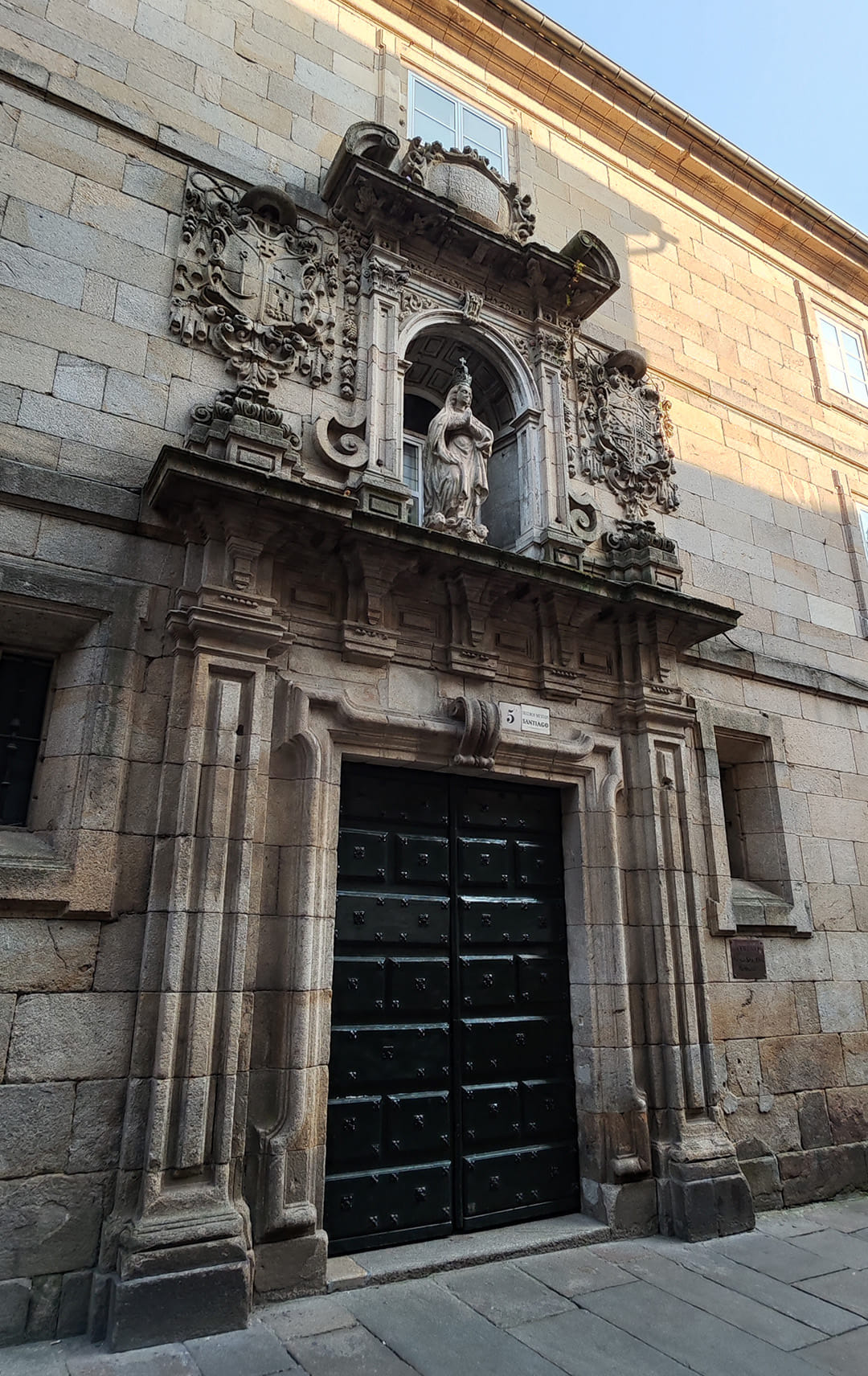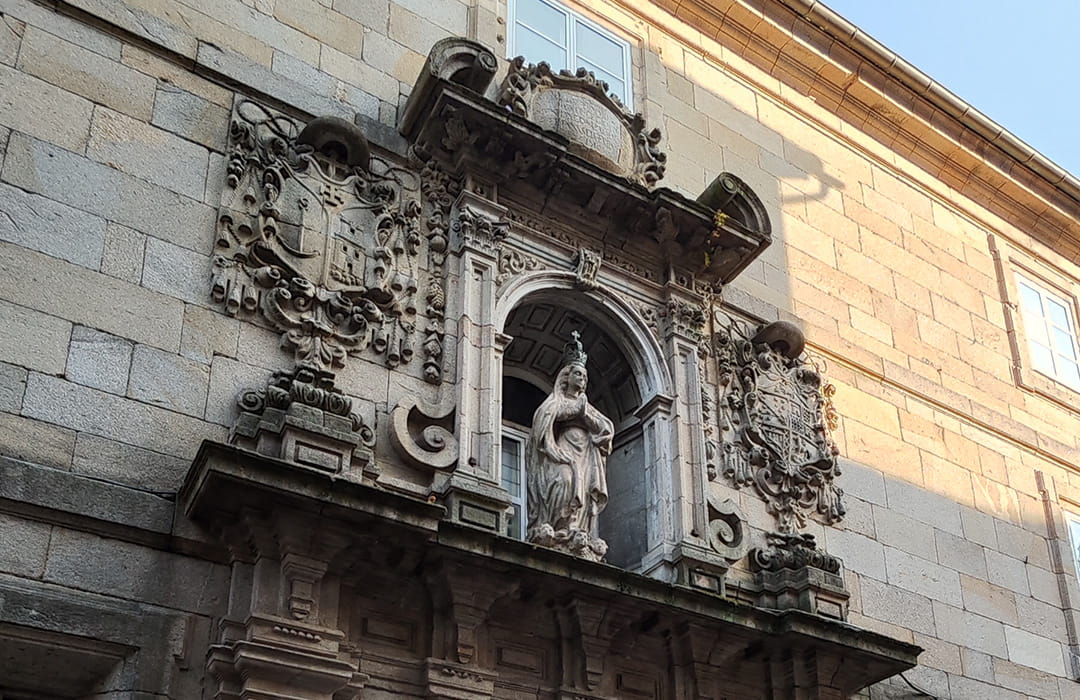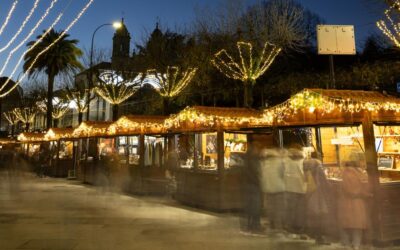The architectural complex of As Orfascomposed of the convent, the church and the school, represents an outstanding work of baroque style, whose origin dates back to the seventeenth century, and a clear example of the architectural paradigm of Santiago de Compostela.
The enclosure was baptized by Archbishop Juan de San Clemente, who promoted its foundation with the objective of housing, educating and indoctrinating girls without families and in problematic circumstances or lacking economic resources.
The building is framed in the baroque style, but lacks excesses and is characterized by its sobriety and ornamental simplicity, something very common in women’s convents. Despite this, historians highlight the enhancement of the accesses to the interior of the convent and the church itself.
The construction is attributed to Melchor de Velasco in 1664, although it was subsequently subjected to various reforms by Fray Gabriel de Casas (1698) in the church and Fernando de Casas y Novoa (1715), in this case in the school.
Regarding the characteristics of the building, it was built in granite masonry and the building has a Latin cross plan, with a single nave, while the roof, a barrel vault with transverse arches, is supported by Tuscan pilasters. In turn, the façade has two large Tuscan pilasters that reach the cornice and the eaves.

In addition, the door is surrounded by a thick molding that, in its upper corners, outlines a pair of earmuffs. The entablature and the pediment have the characteristic coat of arms of Archbishop San Clemente.
For its part, the front of the school is divided into two sections: the lower door, flanked by two pilasters that support the entablature, and the upper section, with a niche framed by two pilasters with Corinthian capitals that support a curved pediment.
In turn, the single-bodied bell tower was used as a dividing line between the school and the church that complete the architectural ensemble of As Orfas.
The temple stands out, among other elements, for an Immaculate Conception by Gambino that focuses attention on the altarpiece of the High Altar, created by Francisco de Lens. Also of interest is the tomb of Cardinal Martín de Herrera, designed in white marble by the modernist Asorey.
At present, the As Orfas site is the seat of the Nuestra Señora de los Remedios school and the church is a regular place of worship, with masses on Sundays and holidays at 11:00 am.






